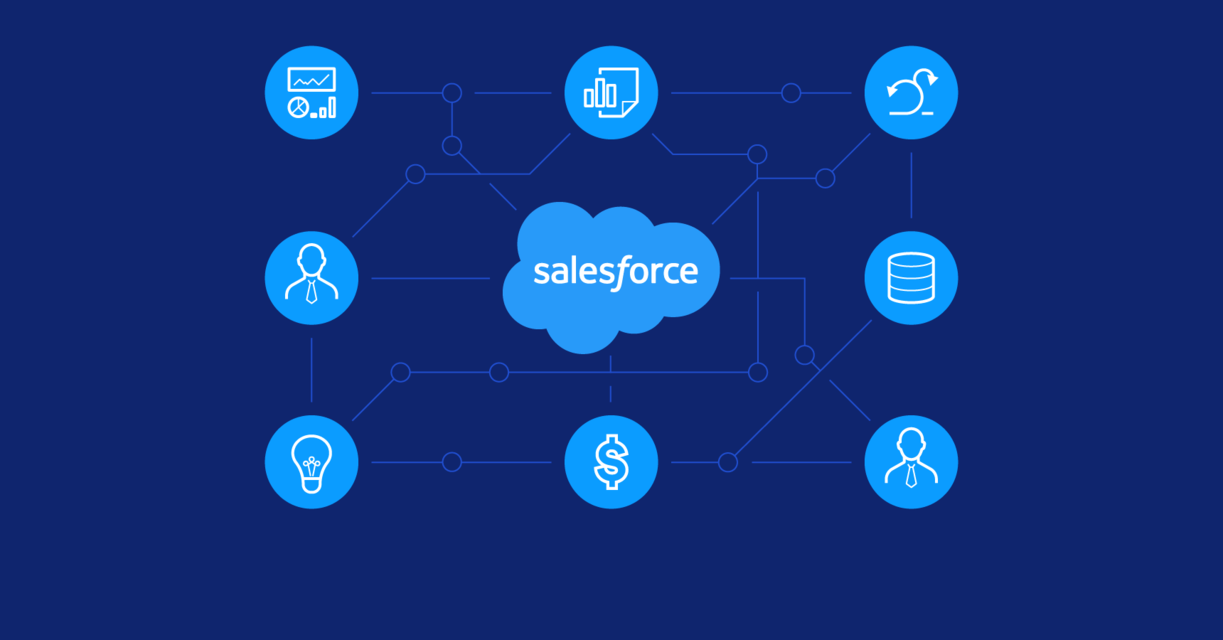Salesforce development is a process of customizing and developing applications on the Salesforce platform to meet specific business needs. This includes the creation of custom objects, workflows, and the use of Apex, Salesforce’s proprietary programming language. The development process is flexible, accommodating different aspects to meet various business objectives. Salesforce, a leading CRM platform globally, carries immense significance in the business world. This blog aims to provide an in-depth understanding of Salesforce development and its benefits for businesses, the development process, and the role of a Salesforce Development Company.

Contents
- 1 Benefits of Salesforce Development for Businesses
- 2 The Salesforce Development Process: An Overview
- 3 Deep Dive into Each Stage of Development
- 4 Role of a Salesforce Development Company
- 5 Conclusion
Benefits of Salesforce Development for Businesses
Salesforce development offers numerous benefits to businesses, enhancing productivity, optimizing customer relations, and driving growth. Some key benefits include:
Customizability
Salesforce platform allows businesses to customize applications to suit their unique needs. This typically translates into more efficient workflows and higher productivity.
Scalability
As businesses grow, their needs evolve. Salesforce’s flexible architecture allows for seamless scaling to accommodate growth, ensuring that the platform will remain a valuable tool as the business expands.
Integration
Salesforce easily integrates with other systems and applications used in businesses, providing a centralized portal for data and processes. This integration enhances productivity by streamlining processes and improving data visibility.
Data Analysis
With Salesforce’s advanced data analysis tools, businesses gain valuable insights into their customer behaviors and preferences, helping them make informed decisions and develop effective strategies.
Customer Relationship Management
At its core, Salesforce is a CRM platform. It helps businesses manage their relationships with customers, track customer interactions, and improve customer service, ultimately leading to customer retention and increased sales.
Automation
Salesforce development can automate repetitive tasks, freeing up staff to focus on more critical, strategic tasks. This can dramatically increase productivity and efficiency.
By leveraging Salesforce development, businesses can transform their operations and drive their success to new heights.
The Salesforce Development Process: An Overview
The Salesforce development process typically involves several key steps:
Understanding Business Requirements
At the outset, it’s crucial to understand the specific needs and goals of the business. This involves conducting in-depth discussions with relevant stakeholders to gather and analyze requirements.
Designing the Solution
Based on the understanding gained in the first step, the Salesforce developer would design a solution tailored to address the business’s unique needs. This might include customizing existing Salesforce features or developing new apps.
Development and Customization
In this phase, the actual work of modifying the Salesforce platform or building new applications is carried out. This could involve coding, configuring settings, and integrating with other systems.
Testing
A thorough testing phase is essential to ensure that the developed solution works as expected and is free from bugs. This includes unit testing, integration testing, and user acceptance testing.
Deployment
Once testing is complete, the solution is deployed to the live environment. This may require migrating data, setting up user accounts, and providing training to end-users.
Post-Deployment Support
Even after deployment, it’s important to provide ongoing support to address any issues that arise. This could include resolving technical problems, making minor tweaks based on user feedback, and periodically updating the system to add new features or accommodate changes in the business environment.
By following such a structured development process, businesses can ensure that they get the most out of their Salesforce investment.
Deep Dive into Each Stage of Development
Requirement Gathering
Stakeholder Discussions
These meetings generally involve project managers, business analysts, and Salesforce developers. It’s an opportunity to understand the business objectives, identify challenges, and lay the groundwork for the solution design.
Documentation
Every detail discussed in the meetings is documented systematically, including project scope, functional and non-functional requirements, and potential risk factors. This becomes a reference point for all subsequent stages of development.
Designing the Solution
Blueprint Creation
Based on the gathered requirements, a detailed blueprint outlining the proposed solution is created. This contains specifics about customization, new app development, and integrations.
Review and Approval
The proposed solution design is reviewed by key stakeholders and approved before moving to the development phase.
Development and Customization
Coding
This involves writing code to customize Salesforce features or create new apps. Apex, Visualforce, and Lightning Component Framework are commonly used languages for Salesforce development.
Configuration
Some Salesforce customizations require no coding and can be achieved through configurations. This could involve modifying page layouts, creating workflows, or setting up automation rules.
Integration
This involves connecting Salesforce with other business systems to allow seamless data flow. APIs are commonly used for integration.
Testing
Unit Testing
This involves testing individual components of the solution for any errors.
Integration Testing
This is done to ensure all integrated systems work together without any issues.
User Acceptance Testing
This final testing phase involves end users testing the solution in a real-world scenario to ensure it meets their needs.
Deployment
Data Migration
If necessary, existing data may need to be moved to the new system.
User Setup
This involves creating user accounts, setting access permissions, and providing initial training.
Live Deployment
The solution is launched and becomes accessible to all users.
Post-Deployment Support
Technical Support
This includes troubleshooting and resolving any technical issues that arise post-deployment.
Updates and Tweaks
Based on user feedback, minor modifications might be required to enhance usability.
System Updates
Over time, the Salesforce system might need to be updated with new features or to accommodate changes in the business environment.
Role of a Salesforce Development Company
A Salesforce Development Company plays a pivotal role in this process. The right company can add immense value, ensuring that all aspects of the process are handled professionally and efficiently. They bring expertise, experience, and a deep understanding of Salesforce, which is vital for the successful execution of the project. At the same time, they also make sure that all stakeholders are kept informed and updated on progress. The right Salesforce development company will provide best-in-class customer service and ensure the end product is exactly what the customer needs.
Conclusion
Investing in Salesforce not only revolutionizes your company’s operational efficiency but also significantly enhances customer relationships. The right Salesforce Development Company is instrumental in this transition. Leveraging their expertise and deep understanding of Salesforce, they can professionally and efficiently handle all aspects of the process. Furthermore, their commitment to customer service and keeping all stakeholders informed ensures a streamlined execution of the project, delivering an end product that truly caters to your specific business needs. This underlines the crucial role these companies play in the successful digital transformation of your business.
Author Bio :- Arjun is a Business Growth Strategist at a Leading Software Development Company. Apart from working on a long-lasting relationship with customers and boosting business revenue, I am also interested in sharing my knowledge on various technologies through successful blog posts and article writing.




